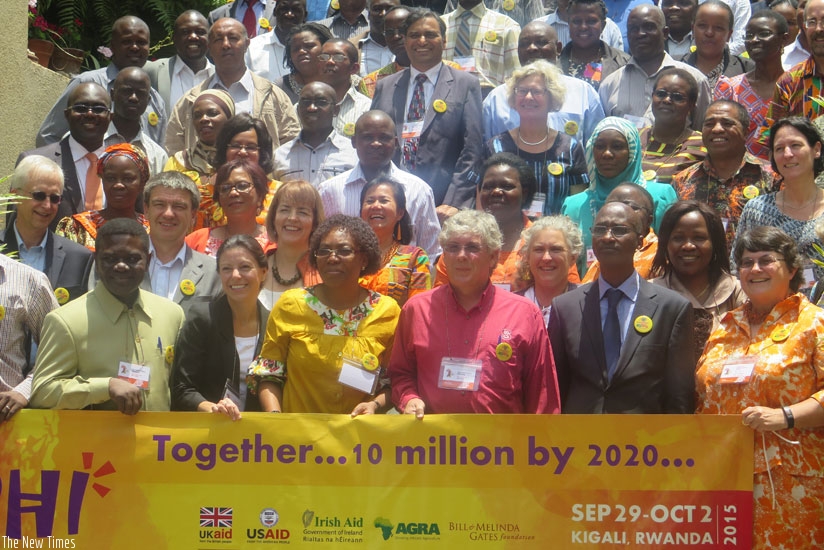There is still need for scientific research into sweet potatoe varieties as part of efforts to reduce malnutrition and increase incomes among households.


There is still need for scientific research into sweet potatoe varieties as part of efforts to reduce malnutrition and increase incomes among households.
This was the message at the closure of the sixth annual sweet potato-for-profit and health initiative international technical meeting in Kigali on Thursday.
More than 100 scientists and experts, government representatives, academics and donors in the areas of agriculture, nutrition and development attended.
Organised by the International Potato Centre (CIP), the meeting drew participants from 14 sub-Saharan countries and others from Europe, Asia and America.
The meeting discussed the progress in sweet potatoes science and delivery along the value chain as well as showcasing innovation nutrition and health.
It was held under the theme "Together 10 million by 2020”, in reference to the drive to reduce malnutrition and increase incomes among at least 10 million Sub-Saharan African households from about 1.9 million currently.
The meeting outlined the state of sweet potato and processing investment in Sub-Saharan Africa.
"We highly recommend that governments prioritise the crop by mixing it with other crops, expanding research on good varieties and processing by involving more private players to contribute to food security and nutrition,” said Barbara Wells, the director general of International Potato Centre (CIP).
The meeting resolved to focus on ensuring that 10 million people grow orange fleshed potatoes within the next four years across sub-Saharan Africa from 2.1 million households currently.
"Our goal with orange fleshed sweet potatoes is reaching 15 million households across sub-Saharan Africa, India, Bangladesh and Indonesia by 2023,” she added.
Scaling up in Rwanda
The director general of Rwanda Agriculture Board, Louis Butare, said Rwanda has been working on seeds varieties and processing but there is still need to invest and link farmers to the market.
"We need to increase sweet potatoes productivity but also encourage agro-processing to make sure farmers do not incur losses. Production must go in line with available market or else it would be in vain. The other main challenge we have is storing sweet potatoes. Post harvest handling needs more effort and research,” he said.
Being a critical food security crop, sweet potatoes are grown by about 70 per cent of Rwandan farmers. The crop accounted for 13 per cent of all crop production in 2014, according to Season Agriculture survey by the National Institute of Statistics of Rwanda.
At least 941,000 metric tonnes of sweet potatoes were produced in 2014.
Rwandans consume over 88 kilogrammes of sweet potatoes per capita per annum, Butare said.
Orange-fleshed sweet potatoes are recommended mostly for children under five years of age to address Vitamin A deficiencies.
RAB released five varieties in 2008 and more varieties in 2013 of which ten varieties were bred by Rwandan scientists and adapted to Rwandan conditions.
Jean Claude Nshimiyimana, from International Potato Centre (CIP), said they are also conducting research on post harvest handling for sweet potatoes storage.
He added that, four years ago, they started with 400 farmers, but they are currently working with 21,000 farmers who now access good varieties which can see a hectare that used to yield 6-8 tonnes now produces about 15 tonnes per ha.
The conference closed with ‘I Love Sweetpotato exhibition’ with a demonstration of innovative sweet potato products.
Antonio Maguahi, from Kenya, showcased some of the attractive products including milk, biscuits, breads and others.
Christine Nyirahabimana, a local exhibitor, said farmers can harvest between 20-30 tonnes per hectare with good varieties.


